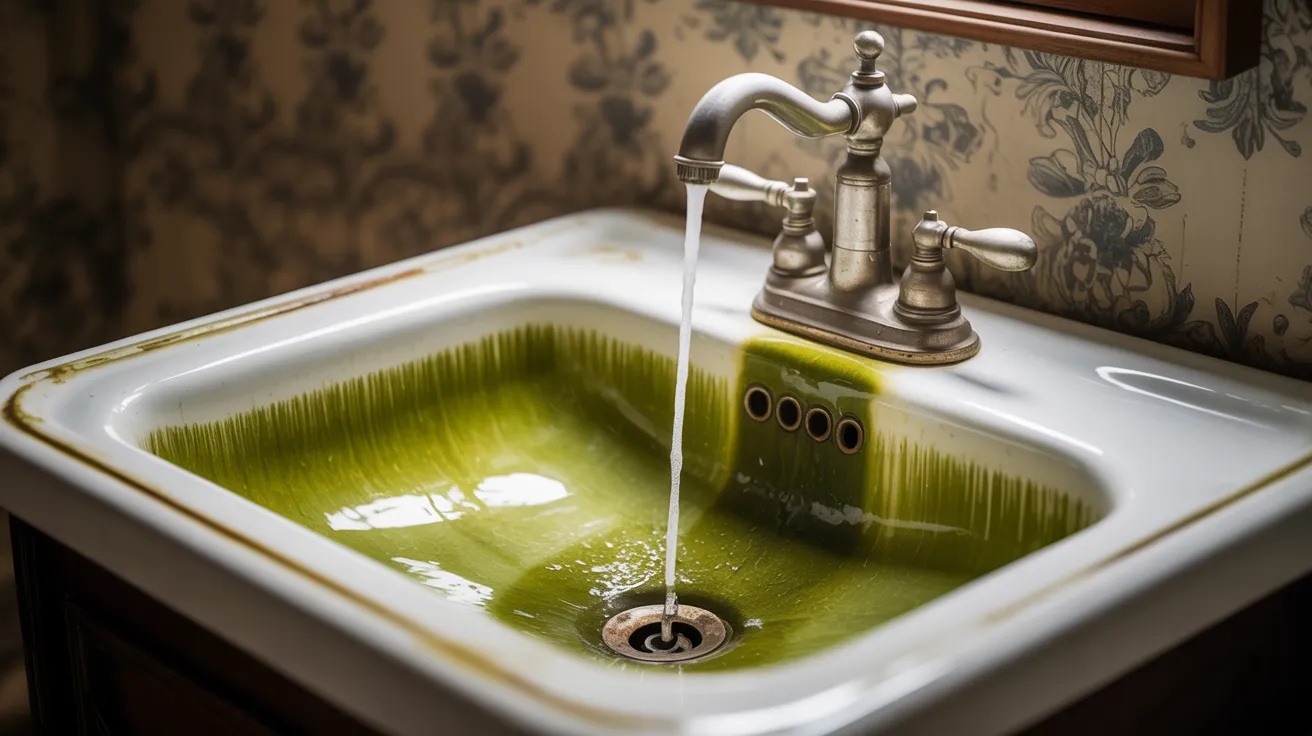Table of Contents
When you walk into your bathroom and are greeted by a foul sewer-like odor, it’s more than just unpleasant – it’s an indication that something is amiss in your plumbing system. This problem might seem minor at first, but it can quickly escalate into a significant issue, as sewer gases contain methane, hydrogen sulfide, and other harmful compounds that can pose health risks in large quantities.
If you’ve noticed a consistent sewer smell coming from your bathroom sink, chances are it’s time to address the issue. In this article, I will dive into the common causes of this issue and provide quick fixes to restore your bathroom’s freshness. Whether it’s dry P-traps, clogged drains, or damaged pipes, I’ll cover everything you need to know to tackle the problem head-on.
Common Causes of Sewer Smells in Your Bathroom Sink
Dried-Out P-Trap
The P-trap is an essential part of your bathroom’s plumbing system. It’s a U-shaped pipe beneath your sink that holds a small amount of water to create a barrier, preventing sewer gases from entering your bathroom. However, if the P-trap dries out, the seal is broken, allowing unpleasant odors to escape.
Cause: This usually occurs in guest bathrooms or when sinks and drains have not been used for a while.
Fix: The solution is simple—run water down the drain to rehydrate the P-trap and restore the barrier against sewer gas.
Ventilation Blockages
Vent pipes are a crucial part of your plumbing system, allowing sewer gases to escape outside your home. If these vents become clogged due to leaves, debris, or even animal nests, the gases cannot escape, causing them to seep back into your bathroom.
Cause: A blocked vent pipe forces gases back into your home, often resulting in a strong sewer smell.
Fix: Inspect your vent pipe and clear any blockages. If you’re unable to access it, a professional plumber can help clear the obstruction.
Biofilm Buildup
Over time, bacteria, soap scum, and food particles can accumulate in your sink and drain, forming biofilm—a slimy substance that emits a strong odor. Biofilm is a major contributor to foul smells in sinks and drains, as it creates an environment where bacteria thrive.
Cause: Biofilm buildup is common in bathroom sinks due to frequent use for activities like brushing teeth, shaving, and washing hands.
Fix: Remove the biofilm by thoroughly cleaning your sink and drain. Use a bottle brush to scrub the drainpipes and ensure they’re clear of any buildup.
Clogged Drains
One of the most common causes of bathroom sink odors is a clogged drain. Hair, soap, toothpaste, and other debris can accumulate over time, creating a blockage that traps moisture. This leads to bacterial growth and, eventually, a strong sewer smell.
Cause: Clogged drains trap moisture and bacteria, resulting in persistent foul odors.
Fix: Use a plunger or drain snake to clear the clog. For tougher blockages, you might need a chemical drain cleaner or a plumber’s help.
Leaky Pipes
Leaky or cracked pipes can release sewer gases into the bathroom, causing unpleasant odors. Leaks may not always be visible, especially if they’re hidden under floors or behind walls, but over time, they worsen, leading to more intense smells.
Cause: Leaky pipes allow sewer gases to escape into the bathroom.
Fix: Inspect visible pipes for leaks and tighten any loose connections. For hidden leaks, call a plumber for a more thorough inspection.
Toilet Seal Failures
The wax seal beneath your toilet is essential for preventing sewer gas from escaping. If the wax seal becomes worn or improperly installed, it can cause leaks, allowing gas to escape and enter your bathroom.
Cause: A damaged wax seal under the toilet can lead to sewer smells.
Fix: Inspect the base of your toilet for water pooling or bad odors. If needed, replace the wax ring to restore a proper seal.
Plumbing 101: Understanding the P-Trap and Its Role in Preventing Sewer Odors
The P-trap is a U-shaped pipe located under your sink that prevents sewer gases from entering your bathroom by holding a small amount of water. This water creates a seal that blocks the gas from rising into your living space. Without the P-trap, your bathroom would be vulnerable to unpleasant odors coming from the sewer line.
Why It Matters: The P-trap is essential for protecting your home from toxic sewer gases, including methane and hydrogen sulfide. Keeping the P-trap full and functional is crucial for maintaining a fresh-smelling bathroom.
Quick & Easy Fixes for Eliminating the Sewer Smell from Your Bathroom Sink
Rehydrate Your P-Trap
Cause: A dry P-trap allows sewer gases to escape into your bathroom.
Fix: Run water down the sink to restore the water barrier. If your sink is rarely used, add RV-safe antifreeze to prevent the trap from drying out.
Clear Your Vent Pipes
Cause: Blocked vent pipes prevent sewer gases from escaping outside.
Fix: Check for debris around your roof vents and remove any obstructions. If needed, call a plumber for professional cleaning.
Deep Clean Your Sink
Cause: Biofilm builds up inside drains, creating bacteria and causing foul smells.
Fix: Use a bottle brush to clean the inside of your pipes. Pour a mixture of baking soda and vinegar down the drain to dissolve any buildup.
Unclog the Drain
Cause: Clogged drains trap debris and moisture, promoting bacterial growth.
Fix: Use a plunger to remove blockages. If that doesn’t work, a drain snake or hydro-jetting may be necessary.
Fix Leaky Pipes
Cause: Leaking pipes allow sewer gases to escape into your bathroom.
Fix: Inspect pipes for visible leaks and tighten any loose connections. For more extensive leaks, call a plumber.
Replace Your Toilet Seal
Cause: A damaged wax seal beneath the toilet allows sewer gases to leak.
Fix: Inspect the toilet for leaks or bad smells. If needed, replace the wax ring to restore the seal and eliminate odors.
How to Prevent Sewer Smells from Coming Back in Your Bathroom Sink
- Regularly clean your drains: Use a drain cleaner or baking soda and vinegar to remove buildup.
- Hydrate unused sinks: Run water through guest bathroom sinks and shower drains periodically to keep the P-trap full.
- Check pipes for leaks: Inspect pipes for cracks or loose connections and tighten them to prevent gas leaks.
- Keep vent pipes clear: Regularly check for debris or obstructions in your vent pipes.
When to Call a Professional: Knowing When Your Sewer Smell Needs Expert Help
While many of the fixes listed above can be done yourself, there are times when it’s best to call a plumber. Here are signs that professional help is needed:
- Persistent odor after trying basic fixes.
- Multiple drains or toilets are affected.
- Sewer line issues that require professional tools, like camera inspections.
Final Words
In conclusion, a smelly bathroom sink can often be resolved with simple fixes like hydrating the P-trap, cleaning drains, and addressing ventilation problems. By regularly maintaining your plumbing system, you can prevent the sewer smell from returning and keep your bathroom fresh.
People also ask
Why does my bathroom sink smell like sewage?
The most common causes are a dry P-trap, clogged drains, or blocked vent pipes.
How do I fix a smelly bathroom sink?
Unclog the drain, rehydrate the P-trap, and clear any blockages in the vent pipe.
Is sewer gas dangerous?
Sewer gases like methane and hydrogen sulfide can be hazardous. It’s important to address the smell quickly.
How can I prevent sewer smells in my bathroom?
Regularly clean your drains, ensure the P-trap stays filled, and keep vent pipes clear.
When should I call a plumber for sewer smell?
Call a plumber if the smell persists, if multiple drains are affected, or if you suspect sewer line issues.

